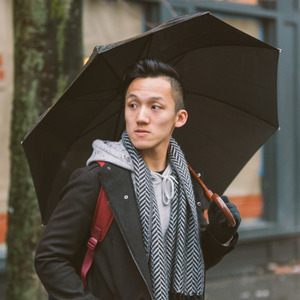Learning how to properly manual brew coffee is an easy, yet amusingly methodical ritual that’s just a ton of fun all around. Not only will your coffee be just the way you like it, but the entire process ends up being, in a way, therapeutic. (I brew my own coffee every morning, and I can certainly vouch for its meditative purposes.)
Maybe you’re here because you’re new to the home-brewing scene and want to learn about the basics. Maybe you’re here out of plain curiosity. As a self-proclaimed coffee aficionado, I’m here to give you basic knowledge on how to control your brew, and the factors to pay attention to in order to brew that perfect cup of coffee.
There are four factors in the process that are most easily adjustable: water temperature, coffee-to-water ratio, grind size, and extraction time.
Due to the variability that goes into bringing the beans to you (from harvesting all the way to roasting), every pack of beans has its own ideal numbers regarding brew factors. Discovering those “golden ratios” is, in my opinion, what makes brewing so enjoyable. Thankfully, it’s not that hard, and I’ll provide a quick run-down of how these factors affect the flavour of your cup.
Water Temperature
Fun fact: the ideal water temperature is actually slightly below boiling, anywhere between 91 and 96ºC. Water at boiling temperature will actually burn your beans, causing your coffee to taste a little too bitter for comfort.
If you’re like me and don’t have a way of measuring exact temperatures with your kettle, you can just leave your boiling water to cool for an extra minute or two before pouring. Don’t leave it for too long, though—if the water’s not hot enough, you may end up with under-extracted coffee, which comes off as watery, sour, and just plain underwhelming.
Coffee-To-Water Ratio

Now that you have your water, you’ll need a suitable amount of beans for your water as well. This factor is arguably not as flexible as water temperature, since too much water to too few beans can lead to a watery, under-extracted cup, and too many beans to too little water can lead to an unpleasantly thick cup.
The “golden ratio” to resolve this is roughly 1:15, or 1 gram of coffee grinds to 15 mL of water. A standard mug holds anywhere between 250 to 350 mL of water, so 15 to 23 g of coffee grounds would be perfect for a single cup.
Grind Size

The grind size of your coffee beans affects the overall surface area and how much of the beans will be fully extracted. A coarser grind will have less surface area and take more time to extract less, while a fine grind will extract quickly, but require less time to do so.
Depending on your brewing method, you will need to adjust your grind accordingly. For example, a French Press needs a coarse grind due to the nature of its filter, as a fine grind would seep through the metal filter.
Your grounds should also be as evenly ground as possible, as an uneven grind would result in an uneven extraction, causing unbalance in your flavours.
Extraction Time

This was sort of explained through the other factors already, since all these factors go hand-in-hand with each other; extraction time is simply the amount of time your beans are spent soaked in water, extracting coffee.
The effectiveness of the extraction depends on water temperature, as hotter water will extract more quickly. Grind size also affects extraction time, as finer grinds will over-extract more quickly than coarse grinds, which take a bit more time to fully extract.
Luckily, most manual brewing methods already provide a template of ideal numbers to follow, so you can’t really go wrong if you follow their instructions. That being said, once you start figuring out your own palate for what you find most desirable in your coffee, you can start adjusting those factors in the smallest ways to see how they affect the outcome; taste is subjective, after all.
Here’s a chart that I like to look at when experimenting with my brewing variables. Once you read through the instructions, this compass becomes easy to follow, and honestly, amazingly helpful.



